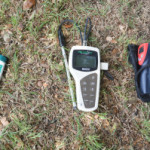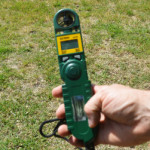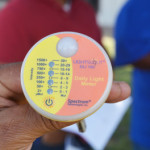Enhancing School Pest Control Safety
By: Maron Finley, IPM Specialist, Texas Department of Agriculture
As the 2013 – 2014 school year wraps up, it makes sense to begin planning for next school year. The control of unwanted pests in and around school facilities is an ongoing process for many school districts and adopting an Integrated Pest Management (IPM) program and incorporating procedures for preventing and managing pest problems using an IPM strategy is a priority. It’s now time to get the school IPM Coordinator(s) trained and ready. The article included below from the Texas Department of Agriculture’s Structural Pest Control Service, is a reminder of requirements as we enforce the use of integrated pest management practices by Texas school districts and ensure safety of the students, men, and women who work in Texas schools.
Texas is a national leader in school pest control safety. By utilizing integrated pest management techniques (IPM), the state helps ensure school children are protected from both pests and the pesticides used in schools. Since 1995, every Texas public school district has been required by law to implement an IPM program that enhances pest control safety, as well as appoint a staff member as an IPM coordinator.
As a result, Texas is the leading state in providing a comprehensive program designed to control pests and diseases, while also allowing for the judicious use of pesticides. By law, each school district must have a school board approved IPM policy that states the district’s commitment to following integrated pest management guidelines. This policy oversees all pest control activities and lays out the IPM program for the district. It also allows for decisions to be made at the local level, which ultimately leads to the highest level of protection throughout each of the state’s 1,027 school districts.
Each school district is also required to have a monitoring program in place that includes written guidelines with set thresholds for when pest control actions are justified. The goal is to use the lowest-risk pesticides possible in schools. To protect children with pesticide sensitivities, each school district is required to have procedures in place to notify parents and guardians before a pesticide treatment application is conducted.
Texas Department of Agriculture inspectors assist school districts with their IPM programs and enforce the regulations. Inspectors also are on the lookout for untrained and unlicensed pesticide applicators who may not have the expertise needed to safely apply pesticides. Licensed applicators will know how to avoid potentially risky situations that can happen when pesticides are improperly applied. The goal is to provide a safe environment by enhancing the consumer protection for children, staff and visitors. For more information on school IPM requirements, visit www.TexasAgriculture.gov/spcs
Keeping the landscape in shape, there is an app or device for that
Writer: Kay Ledbetter, Texas A&M AgriLife
Many tools are available for turf managers to help monitor soil or weather conditions, diagnose turf problems or even take the guesswork out of selecting the best-suited grass type for the shade environment, according to a Texas A&M AgriLife Research turf expert.
Dr. Ben Wherley, an assistant professor for turfgrass science/ecology with AgriLife Research and the Texas A&M University soil and crop science department in College Station, demonstrated some of the new tools and technologies available to attendees of the turf and landscape industry at the recent Turf, Landscape and Irrigation Expo at the Texas A&M AgriLife Research and Extension Center in Dallas. https://www.youtube.com/watch?v=p-FBlNel8ik
Whether it is shade, pH, salinity, soil compaction, air circulation, soil type, spray application, lawn size or soil moisture, Wherley said there are an increasing number of helpful apps and tools available for professionals, such as landscapers, golf course superintendents and athletic field managers, as well as homeowners, since most of the devices are reasonably priced.
Some iPhone or iPad apps that are handy, he said, are:
- Sunseeker app allows a person to enter any date and determine the exact trajectory of the sun for that date, helpful in determining how many hours of direct sunlight will reach a given area. Wherley said it also is used for tree pruning and planting, allowing landscapers to identify the problem trees when they have shade issues and determine where the shade pattern will fall when a new tree is planted.
- Planimeter app allows a landscaper to pull up a GPS map of a client’s home and drop pins on the corners of their property to get a quick, accurate estimate of the size of their lawn. “You could literally do a bid remotely or at the customer’s doorstep without having to walk off or measure the site,” Wherley said.
- Landscape and Garden Calculator app helps the landscaper or do-it-yourselfer calculate the quantity of materials, such as fertilizer and mulch needed for any given area, as well as fence lengths, spaces between items and angles if needed.
- Turfgrass Management app is designed for the southern U.S. and has pictures and information for all types of insects, pests and diseases – “things you might want to be looking out for on your site and it gives you an alert on your phone,” Wherley said.
- SoilWeb app allows anyone to access the GPS-based system, identify their location and determine what soil type is there.
The tools or devices Wherley demonstrated and his comments about each include:
- A wind meter – “Very helpful when a turf manager needs to make spray applications. When spray technicians go out and make an application, they need to be sure and document that the application was made under a minimal wind speed to avoid off-target movement of the application. This device can be picked up for less than $100.”
- Daily light integral or DLI meters – “Think of them as a rain gauge for light.
They can be turned on and put anywhere on the landscape and you come back 24 hours later. It will register the amount of photons in a 24-hour period that that given spot has received – and ultimately that is what plants respond to.
- “In recent years, we have begun to get a pretty good idea of the minimum DLI requirements for maintaining acceptable quality of different turf species and cultivars. It measures moles of light. By taking a quick 24-hour measurement of your landscape – both in full sun and shade – you can get an idea of how a given turf species or cultivar will perform before you invest money in that sod.”
-

Soil stick pH reader, electrical conductivity meter and turf thermometer. (Texas A&M AgriLife Research Photo by Kay Ledbetter)
Soil stick pH meter – “Designed to take readings in the field, you just press the tip of the unit onto the soil and you can get a reading instantaneously. If the soil is not wet, it will just need to be moistened slightly.”
- Quantum light sensor – “Light is a big issue, and this tells how much
photosynthetic light is hitting a spot. Homeowners want to know ‘If I get X amount of shade in a spot, will a certain turf grow there?’ These are a little more expensive, about $200 to $300, so probably will be used by a professional rather than a homeowner.”
- Soil profile sampler – “This provides you an undisturbed soil profile sample 6 inches deep, which is good if you want to show a customer they have a thatch problem. Or maybe they laid sod and they are watering and it is still wilting. You dig down, find out they have soil layering issues, and the water can’t get down through the clay to the sand. You can learn a lot about a system by looking at the soil profile.”
- Soil moisture meters or soil probes – “These are utilized to monitor moisture level in the soil profile. Many golf courses have begun to use these daily on greens for determining precisely where and how much to hand water, allowing the course to save water by not using the automatic irrigation system until the entire green has dried down.”
- Turf thermometer – “This can give you an idea early on of whether your turf is becoming water stressed. There can often be as much as a 20 degree difference between a watered lawn and a dry lawn, and as much as a 50 degree difference between the lawn and pavement or stone.”
- Electrical conductivity meter – “If you think salts might be the reason for turf decline, this will help you test. Wherever the tip is will be where you measure salinity. Salt tends to accumulate at the surface or at the waterline, so you don’t stick this too deep into the soil. The device also allows you to track where salts have moved following rain or irrigation events, allowing managers the ability to know when they’ve effectively ‘flushed’ salts below the roots of their turf.”
“These are just a handful of some of the latest tools and technologies that have enhanced the capacity of today’s turfgrass professional to more effectively diagnose issues and better manage high quality greenscapes,” Wherley said.
National Safety Month Focus – Respirators
By Univar USA

Respirators are important tools for the pest control trade and we need to understand their proper use.
Respirators are important tools of our trade and we need to understand their proper use. Approved respirators are tested and approved by NIOSH (National Institute for Occupational Safety & Health), and OSHA (Occupational Safety & Heath Administration) regulates respirator use in the workplace. OSHA requires the use of NIOSH approved respirators. Respirators come in two basic types:
- Air Purifying – uses a filtering element (cartridge and filter combination)
- Air Supplying – pumps in clean breathable air from a source away from the user
Air Purifying respirators are most commonly used in our business. These respirators utilize prefilters and chemical cartridges to purify the air we breathe. The prefilters remove particulates (dusts and mists), and the cartridges, usually packed with a special charcoal material remove gases and vapors.
There are three basic types of prefilters designated as N, R and P. N Series filters can only be used where the filter will not be exposed to an oil mist in the air (N means “not resistant” to oil mist). R Series filters, on the other hand, can be used in the presence of an oil mist, but they have a use restriction of 8 hours. Finally, P Series filters designate oil proof – these filters can be used in the presence of an oil mist without concern to service life (other than when it traps a sufficient amount of particulates to create breathing resistance). These standard industry designations apply to all manufacturers.
In addition, you will generally see a number of assigned to filters, such as N95 or P100. The number portion refers to the minimum filtration efficiency of the filter. Most prefilters have a designation of 95, 99 or 100. For prefilters with a 100 designation, they are actually required to provide a minimum of 99.97% efficiency, but for labeling purposes are designated N100, R100 or P100. So then, a P100 prefilter would provide the greatest durability to materials (oil resistant) and the greatest efficiency at 99.97%.
Thankfully, we now have a wide choice of very effective and comfortable respiratory protection products.
Be sure you and your employees are using the right type of respirator, cartridges and filters for the type and concentrations of pesticides you are using. Read and understand product labeling and use recommendations, and ask your Univar associate if you have questions about the right product to use.
Be sure to consider your other everyday safety product needs as well: Protective eyewear, disposable chemical-resistant gloves, Tyvek coveralls and shoe covers, first aid kits—all are available at Univar in a range of materials, sizes and styles, depending on your application and preference.
EPA and Reckitt Benckiser Inc. Reach Agreement to Cancel Certain Rodenticide Products
WASHINGTON – The U.S. Environmental Protection Agency (EPA) has reached agreement with Reckitt Benckiser Inc. to cancel 12 d-CON mouse and rat poison products that do not currently comply with EPA safety standards.
“Millions of households use mouse and rat poison products each year. Canceling these products will help prevent risks to children, pets and wildlife,” said Jim Jones, Assistant Administrator for EPA’s Office of Chemical Safety and Pollution Prevention. “This voluntary move will get us far faster results than would otherwise be achieved through an administrative process.”
Before EPA tightened the safety standards for household rat and mouse poison products, more than 10,000 children a year were accidentally exposed. Since the new standard took effect, the number of children exposed has decreased. The agency worked with a number of companies to develop safer mouse and rat poison products that are effective, affordable and widely available.
The cancellation of these 12 d-CON products that do not comply with current standards will continue the trend of reduced exposure to children, pets and wildlife. The company has agreed to stop production by the end of the year and stop distribution to retailers by March 31, 2015. The new standards require consumer mouse and rat poison products to be housed in protective bait stations.
Pellets and other bait forms that cannot be secured in bait stations are prohibited. EPA also prohibits the sale of products containing brodifacoum, bromadiolone, difethialone and difenacoum to residential consumers because of their greater risk to wildlife such as mountain lions, eagles, wolves and foxes.
For more information, visit:
http://www2.epa.gov/rodenticides/canceling-some-d-con-mouse-and-rat-control-products
For a complete list of the homeowner use rat and mouse products that meet EPA’s safety standards, visit:
http://www2.epa.gov/rodenticides/choosing-bait-station-household-use




 .
.